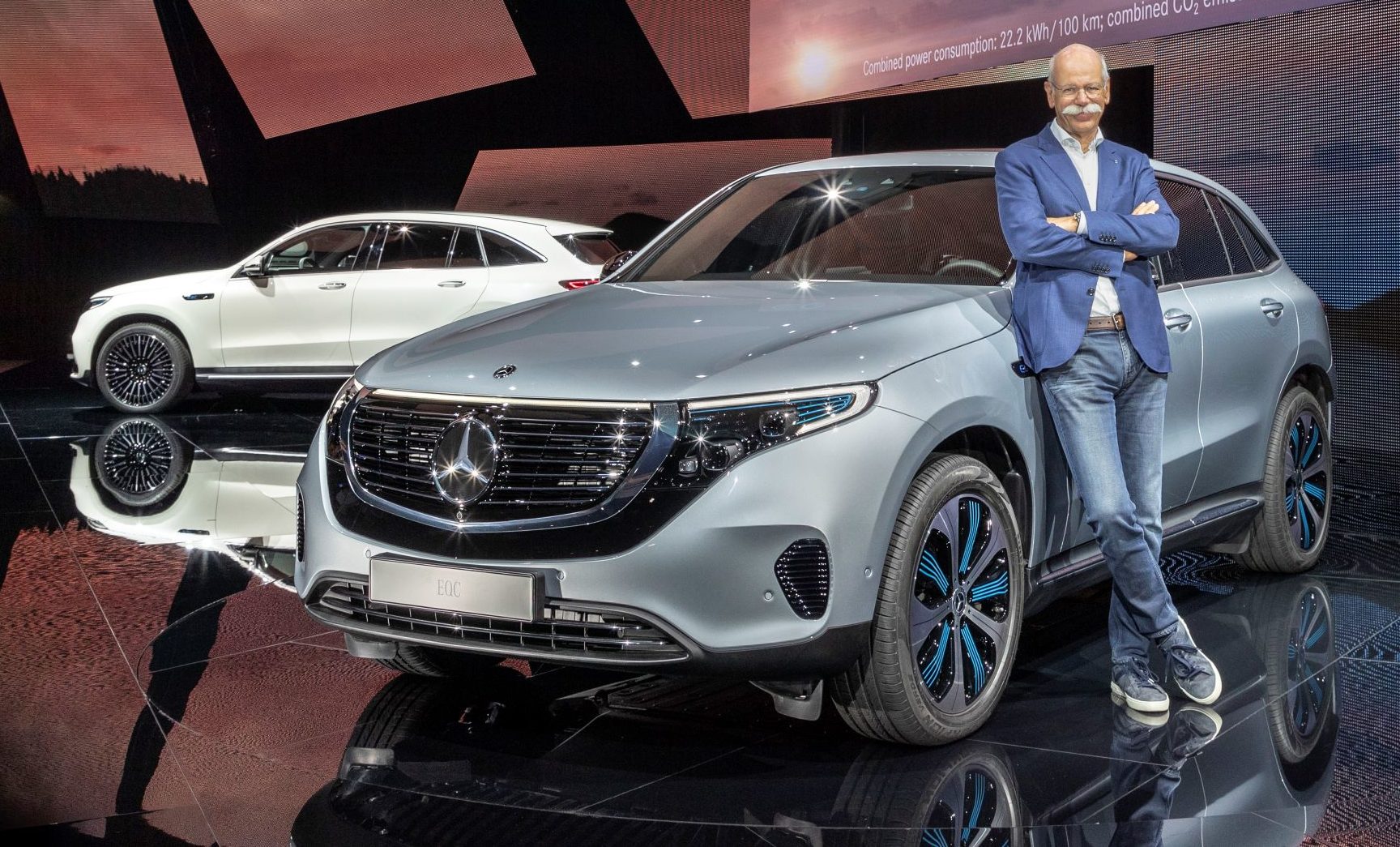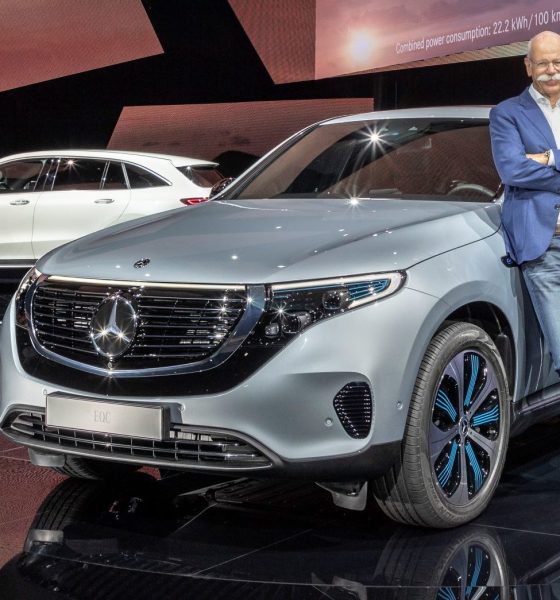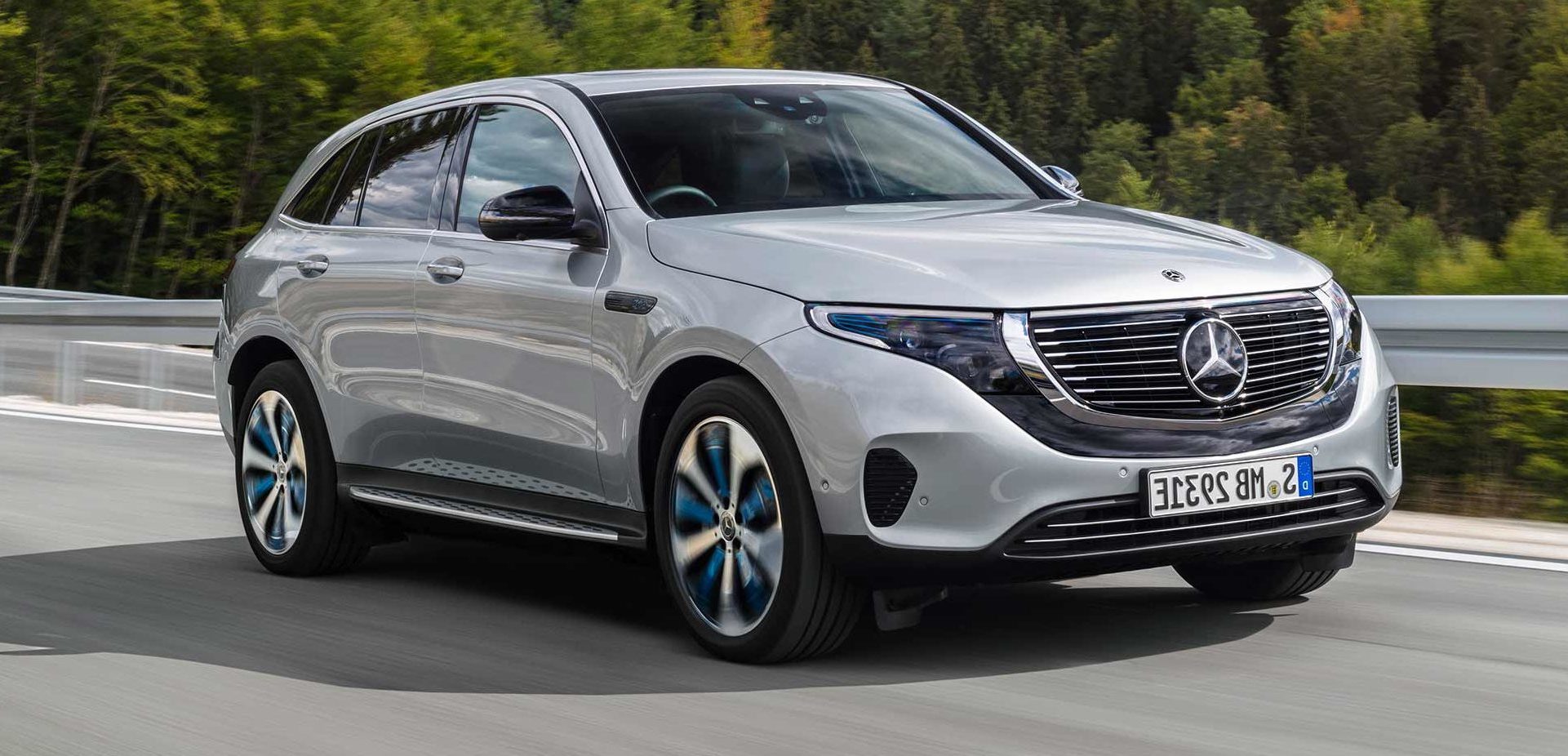

News
Daimler CEO steps down weeks after unveiling Mercedes-Benz’s first Tesla Model X competitor
Just weeks after taking the wraps off the Mercedes-Benz EQC, the German automaker’s first all-electric vehicle that’s expected to compete in the same segment as the Tesla Model X, Daimler has confirmed that CEO Dieter Zetsche would be stepping down from his post. Zetsche, who has been with Daimler for 42 years, will return to the company and chair the supervisory board in 2021.
The Daimler CEO will be succeeded by Ola Källenius, a 49-year-old Swede who also has a long tenure in the legacy automaker. Prior to becoming CEO, Källenius served as the company’s head of R&D. He is expected to take over as CEO and head of Mercedes-Benz this May 2019, provided that his appointment is approved by shareholders. Zetsche, for his part, was originally signed on until December 2019, but he has opted to depart earlier amidst the company’s preparations for “fundamental changes taking place in the automotive industry.”
Daimler’s appointment of Källenius is considered as part of the company’s push to appoint a younger set of leaders that can effectively carry the company forward in a changing automotive landscape. Among these changes is the emerging wave of electrification, which is pushed by upstart electric car companies like Tesla and embraced by veteran carmakers like Porsche, which recently announced the cancellation of its diesel-powered line.
In this light, selecting Ola Källenius to succeed Dieter Zetsche seems to be the right direction for Daimler. Källenius, after all, is noted for being one of the company’s executives who pushed for the development of 10 electric vehicles that are planned for release. The Mercedes-Benz EQC, unveiled earlier this month, is the first of these vehicles.
The younger executive’s background is unlike Daimler’s other CEOs,’ considering that Källenius’ experience is not on engineering, but on finance. His experience is vast nonetheless, with stints in both McLaren Automotive and AMG, Mercedes-Benz’s performance-oriented sub-brand that grew and evolved under Dieter Zetsche’s leadership.
Daimler’s first foray into electric vehicles, the Mercedes-Benz EQC, is a premium SUV that would compete directly with vehicles like the Tesla Model X. In the EQC’s unveiling, Daimler CEO Dieter Zetsche announced that the vehicle kicks off the company’s $12 billion push towards the development of electric vehicles under the EQ brand. Zetsche also noted that Daimler would be investing another $1.2 billion in global battery production to support the growth of the company’s electrified offerings.

The Mercedes-Benz EQC features several compelling features that make it a contender in the premium electric SUV segment. It is equipped with dual electric drivetrains at each axle, which generate a combined 402 hp and 562 lb-ft of torque. Thanks to its electric motors, the EQC can sprint from 0-60 mph in 4.9 seconds and hit a top speed of 112 mph. The SUV is also equipped with an 80 kWh battery, which is expected to give the vehicle a range of over 200 miles per charge.
That said, Mercedes-Benz noted in a later update that it would adopt a gradual rollout for the EQC, to ensure that warranty costs for the vehicle don’t spike when customers start taking deliveries. Mercedes-Benz head of production and supply chain management Markus Schaefer described the company’s rationale in a statement.
“We want to be sure we deliver Mercedes quality from day one in all aspects, and we have to watch the warranty side for customers as well. We don’t want customers ending up at the mechanic later. Slowing down the ramp-up is a tool to make sure we do it right, to address all the unknowns that an electric car brings,” he said.

Elon Musk
Elon Musk’s X will start using a Tesla-like software update strategy
The initiative seems designed to accelerate updates to the social media platform, while maintaining maximum transparency.

Elon Musk’s social media platform X will adopt a Tesla-esque approach to software updates for its algorithm.
The initiative seems designed to accelerate updates to the social media platform, while maintaining maximum transparency.
X’s updates to its updates
As per Musk in a post on X, the social media company will be making a new algorithm to determine what organic and advertising posts are recommended to users. These updates would then be repeated every four weeks.
“We will make the new 𝕏 algorithm, including all code used to determine what organic and advertising posts are recommended to users, open source in 7 days. This will be repeated every 4 weeks, with comprehensive developer notes, to help you understand what changed,” Musk wrote in his post.
The initiative somewhat mirrors Tesla’s over-the-air update model, where vehicle software is regularly refined and pushed to users with detailed release notes. This should allow users to better understand the details of X’s every update and foster a healthy feedback loop for the social media platform.
xAI and X
X, formerly Twitter, has been acquired by Elon Musk’s artificial intelligence startup, xAI last year. Since then, xAI has seen a rapid rise in valuation. Following the company’s the company’s upsized $20 billion Series E funding round, estimates now suggest that xAI is worth tens about $230 to $235 billion. That’s several times larger than Tesla when Elon Musk received his controversial 2018 CEO Performance Award.
As per xAI, the Series E funding round attracted a diverse group of investors, including Valor Equity Partners, Stepstone Group, Fidelity Management & Research Company, Qatar Investment Authority, MGX, and Baron Capital Group, among others. Strategic partners NVIDIA and Cisco Investments also continued support for building the world’s largest GPU clusters.
News
Tesla FSD Supervised wins MotorTrend’s Best Driver Assistance Award
The decision marks a notable reversal for the publication from prior years, with judges citing major real-world improvements that pushed Tesla’s latest FSD software ahead of every competing ADAS system.

Tesla’s Full Self-Driving (Supervised) system has been named the best driver-assistance technology on the market, earning top honors at the 2026 MotorTrend Best Tech Awards.
The decision marks a notable reversal for the publication from prior years, with judges citing major real-world improvements that pushed Tesla’s latest FSD software ahead of every competing ADAS system. And it wasn’t even close.
MotorTrend reverses course
MotorTrend awarded Tesla FSD (Supervised) its 2026 Best Tech Driver Assistance title after extensive testing of the latest v14 software. The publication acknowledged that it had previously criticized earlier versions of FSD for erratic behavior and near-miss incidents, ultimately favoring rivals such as GM’s Super Cruise in earlier evaluations.
According to MotorTrend, the newest iteration of FSD resolved many of those shortcomings. Testers said v14 showed far smoother behavior in complex urban scenarios, including unprotected left turns, traffic circles, emergency vehicles, and dense city streets. While the system still requires constant driver supervision, judges concluded that no other advanced driver-assistance system currently matches its breadth of capability.
Unlike rival systems that rely on combinations of cameras, radar, lidar, and mapped highways, Tesla’s FSD operates using a camera-only approach and is capable of driving on city streets, rural roads, and freeways. MotorTrend stated that pure utility, the ability to handle nearly all road types, ultimately separated FSD from competitors like Ford BlueCruise, GM Super Cruise, and BMW’s Highway Assistant.
High cost and high capability
MotorTrend also addressed FSD’s pricing, which remains significantly higher than rival systems. Tesla currently charges $8,000 for a one-time purchase or $99 per month for a subscription, compared with far lower upfront and subscription costs from other automakers. The publication noted that the premium is justified given FSD’s unmatched scope and continuous software evolution.
Safety remained a central focus of the evaluation. While testers reported collision-free operation over thousands of miles, they noted ongoing concerns around FSD’s configurable driving modes, including options that allow aggressive driving and speeds beyond posted limits. MotorTrend emphasized that, like all Level 2 systems, FSD still depends on a fully attentive human driver at all times.
Despite those caveats, the publication concluded that Tesla’s rapid software progress fundamentally reshaped the competitive landscape. For drivers seeking the most capable hands-on driver-assistance system available today, MotorTrend concluded Tesla FSD (Supervised) now stands alone at the top.
News
Elon Musk’s Grokipedia surges to 5.6M articles, almost 79% of English Wikipedia
The explosive growth marks a major milestone for the AI-powered online encyclopedia, which was launched by Elon Musk’s xAI just months ago.

Elon Musk’s Grokipedia has grown to an impressive 5,615,201 articles as of today, closing in on 79% of the English Wikipedia’s current total of 7,119,376 articles.
The explosive growth marks a major milestone for the AI-powered online encyclopedia, which was launched by Elon Musk’s xAI just months ago. Needless to say, it would only be a matter of time before Grokipedia exceeds English Wikipedia in sheer volume.
Grokipedia’s rapid growth
xAI’s vision for Grokipedia emphasizes neutrality, while Grok’s reasoning capabilities allow for fast drafting and fact-checking. When Elon Musk announced the initiative in late September 2025, he noted that Grokipedia would be an improvement to Wikipedia because it would be designed to avoid bias.
At the time, Musk noted that Grokipedia “is a necessary step towards the xAI goal of understanding the Universe.”
Grokipedia was launched in late October, and while xAI was careful to list it only as Version 0.1 at the time, the online encyclopedia immediately earned praise. Wikipedia co-founder Larry Sanger highlighted the project’s innovative approach, noting how it leverages AI to fill knowledge gaps and enable rapid updates. Netizens also observed how Grokipedia tends to present articles in a more objective manner compared to Wikipedia, which is edited by humans.
Elon Musk’s ambitious plans
With 5,615,201 total articles, Grokipedia has now grown to almost 79% of English Wikipedia’s article base. This is incredibly quick, though Grokipedia remains text-only for now. xAI, for its part, has now updated the online encyclopedia’s iteration to v0.2.
Elon Musk has shared bold ideas for Grokipedia, including sending a record of the entire knowledge base to space as part of xAI’s mission to preserve and expand human understanding. At some point, Musk stated that Grokipedia will be renamed to Encyclopedia Galactica, and it will be sent to the cosmos.
“When Grokipedia is good enough (long way to go), we will change the name to Encyclopedia Galactica. It will be an open source distillation of all knowledge, including audio, images and video. Join xAI to help build the sci-fi version of the Library of Alexandria!” Musk wrote, adding in a later post that “Copies will be etched in stone and sent to the Moon, Mars and beyond. This time, it will not be lost.”








